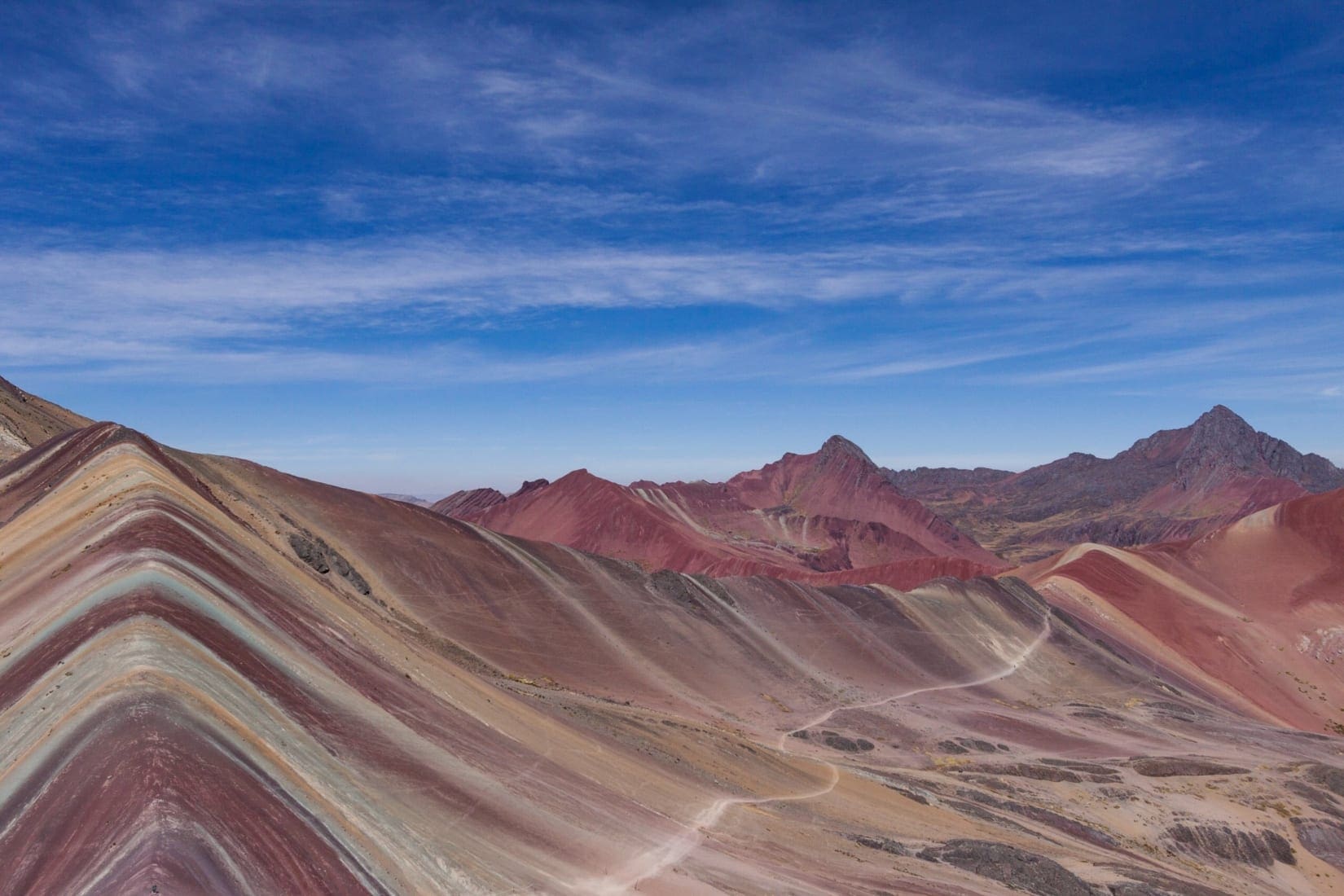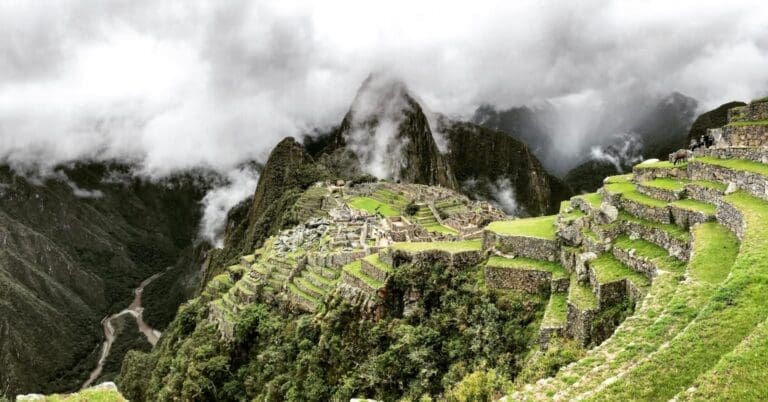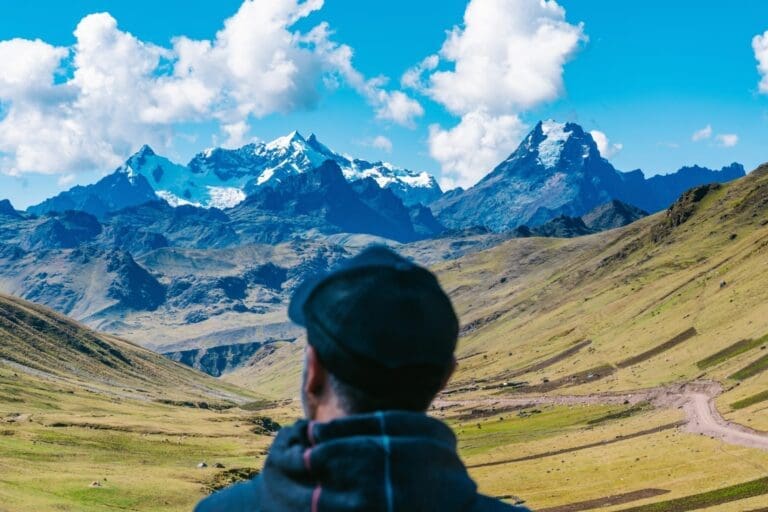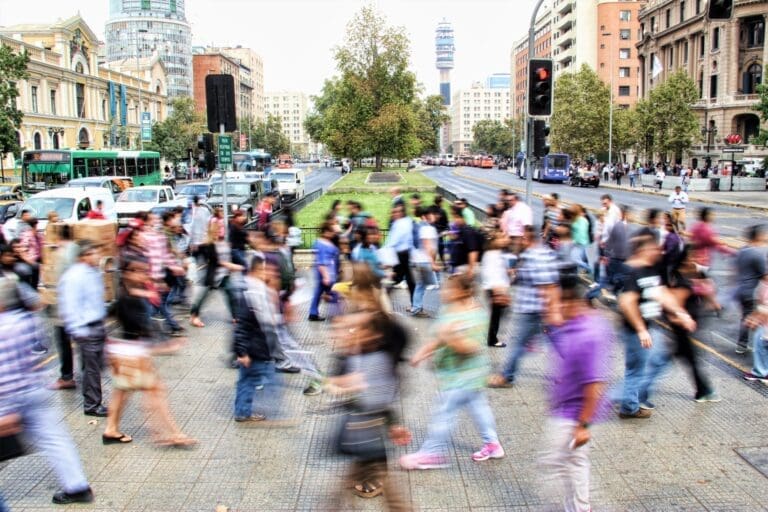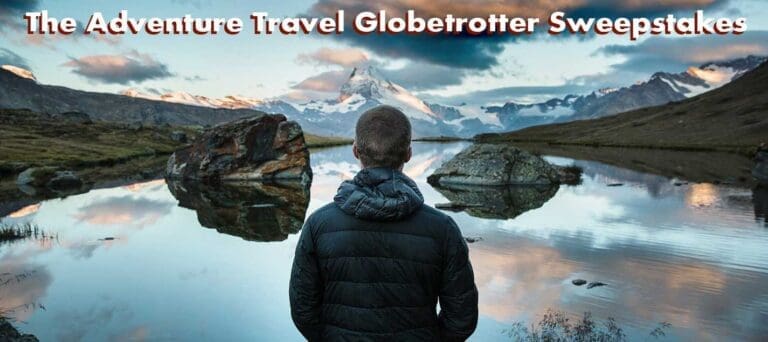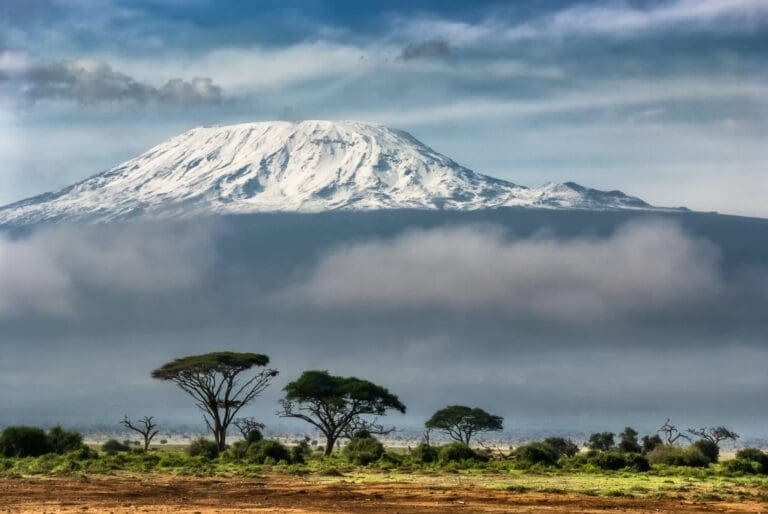The Complete Guide to Visiting Rainbow Mountain in Peru in 2025
Rainbow Mountain in Peru is one of those spots that you will remember for the rest of your life. It looks like something plucked off the surface of Mars, only it’s set at a cloud-smashing 17,060 feet (5,200 meters) above sea level in the depths of the South American Andes.
The most iconic image is of the peak that the locals call Vinicunca, striped in dashes of rust-red, ochre, vermillion, turquoise, and yellow. However, the whole area around Rainbow Mountain is remarkable, unfolding in the shadow of the jagged Andes massif in a patchwork of rustic alpaca farms and barren valleys dotted with lakes and snow plumes.
This guide will run through all the ins and outs of visiting Rainbow Mountain. I will outline why it’s risen and risen in popularity in the last decade to become what’s now one of the most popular attractions in Peru.
What is Rainbow Mountain, exactly?
When people talk about Rainbow Mountain, they’re actually referring to the summit of Vinicunca, also known as Winikunka, Montaña de Siete Colores, and Montaña de Colores. Rainbow Mountain sits in the shadow of the Cordillera Vilcanota, and Nevado Auzangate, some 90 miles to the south-east of Cusco, Peru. At 17,060 feet (5,200 meters) up, the mountain isn’t actually the tallest in the region. However, it’s famed for its striped and colored appearance, a phenomenon that’s down to its unique mineralogical and geological makeup. The vibrant colors of Rainbow Mountain come from a mix of mineral deposits, which create its striking striped appearance. Reds, yellows, and greens are the result of layers of claystone, sandstone, and gypsum exposed by shifting tectonic plates and melting glaciers. The high-altitude environment and unique microclimate further intensify the vibrant hues, making it a stunning natural sight. It is important to note that there is a less traveled rainbow mountain in Peru named Rainbow Mountain Palccoyo.
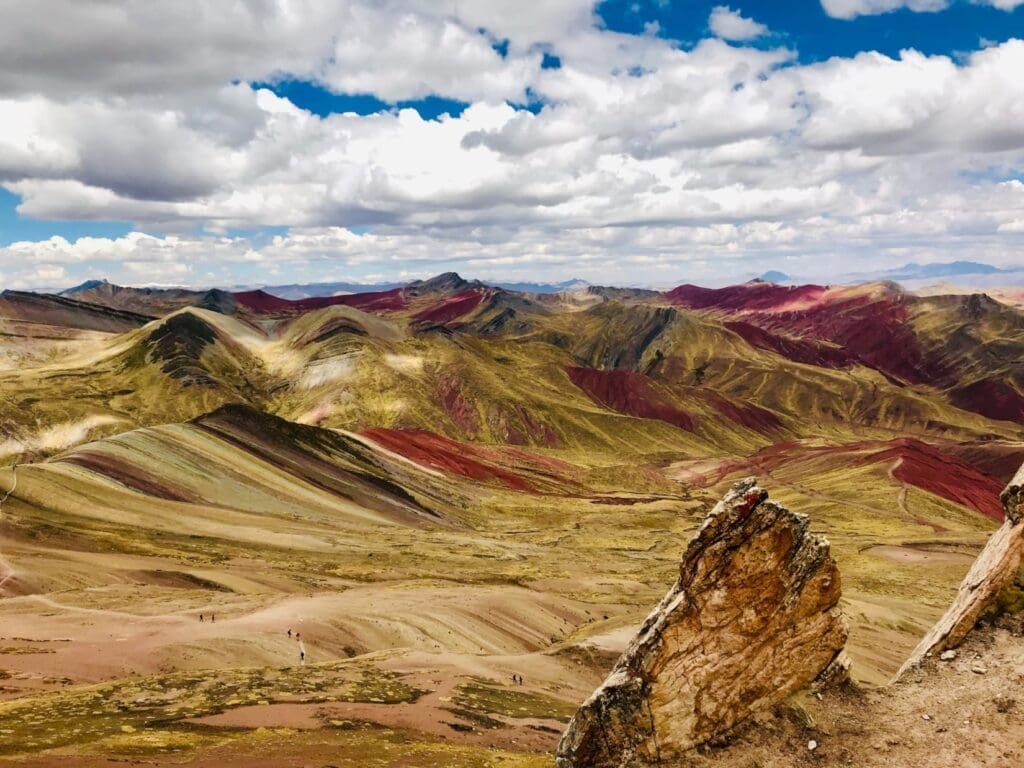
Where is Rainbow Mountain?
Rainbow Mountain sits within the south-eastern side of the Cusco Region, in the far south of Peru as a whole. The peak itself is hemmed in by a speckling of other 17,000-foot-high (5,182-meter) summits, although the much-mightier massifs of Qullpa Ananta and Auzangate are the true masters of the range. They sit some directly east and can sometimes be seen from the top of Vinicunca. The mountains look like dagger-like shards of rock clad in ice from a distance!
The trailhead for climbing Rainbow Mountain is located in the town of Pitumarca, Peru. Recent redevelopments of the road there have slashed travel times and made the path far more accessible. You can now arrive at the start of Rainbow Mountain after just a 3-hour drive south from the ancient Incan capital of Cusco, Peru.
The History
Believe it or not, Rainbow Mountain hasn’t really been on the radar of adventurers bound for the Cusco Andes for very long. It’s not like Machu Picchu or the Classic Inca Trail route which gained in popularity in the 1970’s. For those looking for an extraordinary adventure, the Classic Inca Trail to Machu Picchu trek is one of the most popular hikes in the world. If you have extra time planned in Peru and are up for a challenge, the Classic Inca Trail trek could be a great fit. To learn more about it check out our post on the 12 Fast Facts About the Inca Trail to Machu Picchu.
The truth is that the multicolored peak of Rainbow Mountain you now see wasn’t very well known until around 2015, and the first official tour was in 2016. Before that, it was almost entirely covered in permafrost and regular snowdrifts. Rising temperatures due to global warming changed this, eventually revealing the majestic mineralogical hues that draw so many people to the mountain today.

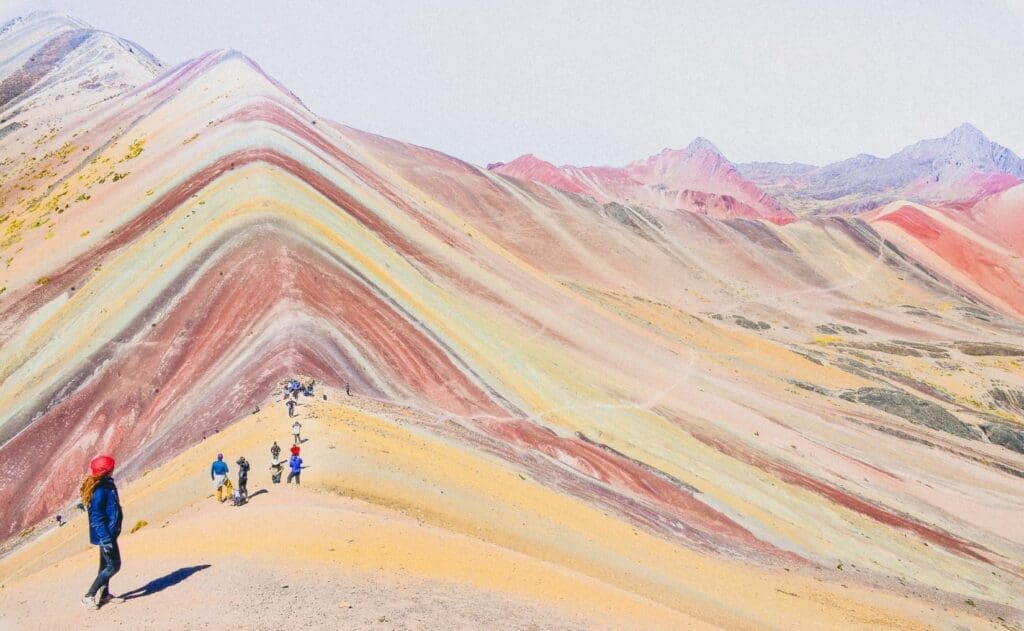
Trekking Rainbow Mountain
The trek to the top of Rainbow Mountain is now firmly established as one of the top adventure experiences in Peru. In all, it takes around three to four hours to do a return hike to and from the summit, going on a well-worn track. You’ll leave from a trailhead that sits on the south slope and proceed through a wide, flat valley bottom that’s filled with grazing alpaca herds and time-stood-still Peruvian farmsteads surrounded by rough-stone walls.
The trek up Rainbow Mountain is a gradual ascent and begins the moment you leave the car park, skirting a big, rust-tinged ridge to the west. This is where you’ll start to see the rocks changing colors. Distinctive touches of orange cascades through darker crags of stone overhead, while thick grass and moss bring a touch of greenery to the foreground. The track soon bends westwards and there, it widens and steepens in the run up to the final ascent. Just before you enter this section of the mountain, be sure to spin around and take in the grand amphitheater of the Andean highlands of Peru that rolls out behind. It’s a scene to make the jaw drop, with the snowy top of Ausangate Mountain in the vista on one side and distant mountains clambering over one another in the horizon.
The last push to the top of Rainbow Mountain is a short zigzag that cuts straight out of the south slope. It might look easy, but this is where the altitude really makes its presence felt. The panorama of the summit starts to come into view, and before you know it, you’ll be gazing straight out at the green and yellow and blue symphony that is the iconic Vinicunca.
What’s the view like from the summit?

The view from the top of Rainbow Mountain is what most people come for. The reward at the end of the trek is a lookout point that faces directly over the famous ridge of Rainbow Mountain itself. On a good day, you’ll be able to see all the strata of different colors, going from daffodil yellow to coppery green to scarlet and orange. It’s an amazing sight.
Of course, that’s not the only part of the view that’s worthy of note. The summit of Vinicunca is also the perfect place to stare in awe at the colossal glacier of the Nevado Ausangate. This mountain stands at 20,945 feet (6,384 meters) and showcases huge, creaking ice fields that drop down straight out of the clouds.
Best Time to Visit
The weather can make or break the hike to Rainbow Mountain. Clear days reveal the true majesty of the location, along with 360-degree panoramas of the southeastern Peruvian Andes. Cloudy days will do the opposite, and it’s not uncommon for the whole peak to be shrouded in mist and rain – it is 17,000 feet (5,182 meters) up, after all!
To give yourself the best chance of good conditions, plan your adventure for the months between March and September. July and August tend to be the sunniest of all, but you’ll also contend with large crowds of up to 3,000 people each day, as it’s the height of the Peru tourism season.
Months like October and May tend to offer a good balance between visitor numbers and climatic conditions, but always be ready to change your plans, because there’s no telling when a snowstorm or rain belt can come in.
How High is Rainbow Mountain?
Rainbow Mountain stands at an impressive 17,060 feet (5,200 meters) above sea level. Let’s put that into perspective: It means you’re going to be climbing to almost the same altitude as Everest Base Camp (17,598 feet, 5,364 meters) in Nepal. Oh, and you’ll be smashing the highest point that’s achieved on the Classic Inca Trail, which is 13,828 feet (4,215 meters) at Dead Woman’s Pass. More importantly, the whole of the Vinicunca trek is done at heights of over 15,000 feet (4,572 meters). This hike is challenging right from the start.
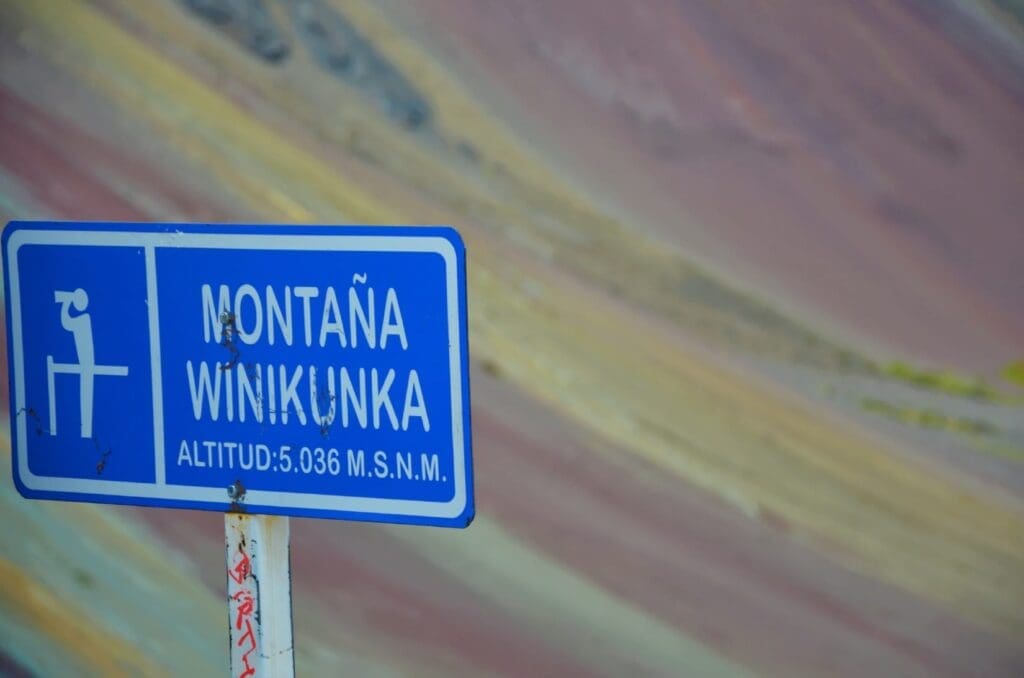
Proper acclimatization is key to visiting and hiking Rainbow Mountain. To acclimate you can either spend a few days in Cusco, Peru which sits at 11,152 feet (3,399 meters) or you can do the Vinicunca trek after first doing a high elevation adventure such as the Classic Inca Trail or the Salkantay Trail. If you decide to add a few more days onto your trip, check out our Complete Guide on Hiking the Inca Trail to Machu Picchu. Both the Classic Inca Trail and Salkantay trek will take you up to over 13,000 feet (3,962 meters) in elevation which will help your body adjust to the higher altitude.
What to wear to climb Rainbow Mountain
It is important to dress properly and bring suitable gear when hiking up Rainbow Mountain. That’s never rung truer than when you’re trekking at over 15,000 feet (4,572 meters) in the Peruvian Andes. No matter the season, the conditions in these parts can change fast. What’s more, temperatures can quickly change from positively balmy to sub-zero without warning, while temperatures range from 26°F (-3°C) to 62°F (17°C).
Choosing an outfit that can easily be layered is a good idea for the Rainbow Mountain hike. Start with a decent thermal underlayer and then add a mid layer, fleece and an outer layer. You probably won’t need the lot, but they’re at hand if required. A waterproof layer is also essential. There is a lot of rainfall in this part of Peru, and storms can gather suddenly at higher elevations, especially in the rainy season months from October to March.
The terrain on the path to Rainbow Mountain is nowhere near as tough as on, say, the Inca Trail. However, it’s still rocky and uneven in parts. Couple that with the possibility of sudden weather changes, and we’d say it’s definitely water-proof hiking boot territory. Lighter trail runners or running shoes are not recommended for this trek.
One this hike it is recommended to pack layers, when you reach the top it can be a bit cold and windy. Due to the higher altitude you are likely to burn much easier so make sure you throw some sunscreen and a hat in your pack. It is always a good idea to bring plenty of water and snacks to keep you going throughout the hike to ensure you make it to the stunning views at the top.
We hope you’ve enjoyed this guide to Rainbow Mountain and that I’ve tempted you just a little with the otherworldly draws of this multicolored summit in the midst of the Andes. Be sure to get in touch for more information on our treks and trips to this unforgettable corner of Peru.
I look forward to hiking with you in Peru!
Cheers,
Jeff
Jeff Bonaldi
Founder & CEO
The Explorer’s Passage
About Jeff Bonaldi
Jeff Bonaldi is the Founder and CEO of The Explorer’s Passage, a premier adventure travel company. His mission is to provide travelers with the opportunity to transform their lives and the planet through the power of adventure.
Learn more about Jeff’s story and his company HERE.
Share this amazing location!

